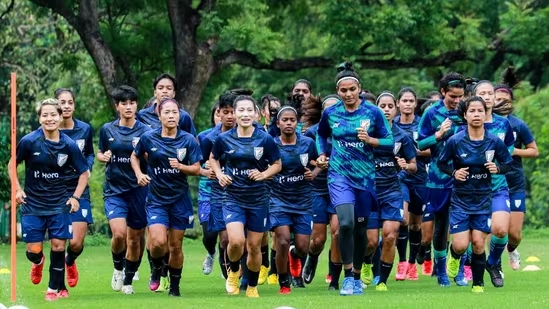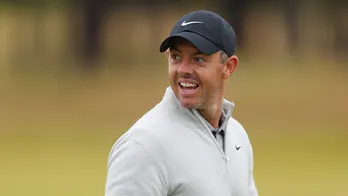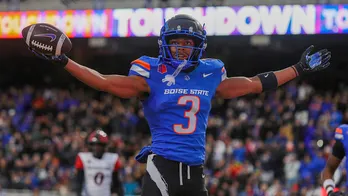India's path to the World Cup needs to put women first
How did the first plaintive cries over Qatar22 reach you these last few weeks? From that deliciously-titled demographic of (Ravish Kumar™) “What’sAppRetiredUnkils”? Or latest videos of the anguished parliamentarian lamenting about, how “ek sau paintees karod desh ki aabaadi” being unable to field a team in a FIFA World Cup? No football World Cup can be played out anywhere on the planet without a caterwauling Indian background score of when will our nation we ever make it to FIFA’s holy land.  PREMIUM
PREMIUM
What if you were told that it could happen faster than you imagine, even without hosting the event itself from a quarter that few paid attention to? There’s an Indian football person even willing to stick their neck out by saying that with methodical planning, execution and fund allocation, an Indian football team could make it to a FIFA World Cup in less than ten years. “In its eleventh edition – by 2031.”
Anjali Shah is a former member of the AIFF executive committee, owner of Mumbai football club PIFA FC plus the founder of the Indian Women’s Football Alliance. Her primary self-descriptor though is: “die-hard lover of the Indian women’s game.” It is the Indian women’s team Shah is certain, can make the much-longed for breakthrough onto the world stage. “Women are the future of Indian football,” she says, “our Asian ranking is much better and with that so are our chances to quality faster.”
The Indian women’s football team is ranked no.61 in the world this month, No. 12 in Asia, with the FIFA Women’s World Cup being expanded from 24 to 32 nations as of next year’s edition, with the Asian Football Confederation (AFC) having six qualifying slots. In 2026, the men’s competition features 48 teams, a minimum of 8 slots from Asia, with the Indian men ranked 19th in Asia, No. 106 worldwide.
Women’s football in India Shah says, “is at an all-time high.” Her faith in the women’s team comes her involvement with the 2021-2022 Indian Women’s League, “it was a complete eye opener” she says, “playing and fitness levels of all the teams that have players from the senior women’s team, have definitely risen.” Indian women’s football should certainly not be judged from the u17 women’s World Cup. “Please don’t go by that. That outing was just thrust upon them without any proper preparation… there were no age-group tournaments organised for proper scouting, no appropriate exposure trips...”
Shah has her own multi-layered blueprint to help the national team reach the 2031 World Cup which will involve a ground-up approach starting from the districts. Every district football association, she believes, should have a dedicated women’s football department “who are incentivised to produce district, state and national team players. The larger the pool the better the resources.”
Alongside the districts there should be a push to develop and energise the Women’s League, set up processes for club licencing and academy accreditation, coach education scholarships and mentorship, with women’s football leadership development scheme on the agenda, focussed on increasing the number of women in decision-making roles on the ground.
It is not, as is nothing in modern pro sport, rocket science. The AIFF’s top-down approach featuring the hosting of big-dazzle events like under17 world cups, Shah says doesn’t help Indian football as its legacy leftovers tend to be negligible. She admits, hosting big events had appeared like a dream coming true, “until I realised how poorly prepared we are for the same - it’s like putting a Maruti800 in an F1 race, no disrespect to Maruti… there is very little happening after the event ends, so all in all it’s just a waste of funds.”
The bottom-up approach, sparking local communities and cultures of the sport, she says, is best the way to go, “Start with the grassroots and then progress to teams. The association should strengthen grassroots initiatives so that we have an overflowing talent pool.” She says while top-down management can “work in individual sports as focussed efforts on a single subject has proved results” it does not translate equally across teams.
During her single four-year term in the AIFF ex-co, Shah says she had called out policies “that were absolutely no good for the development of the women’s game…” When she asked why the national women’s team were not paid match fees, she was told at a women’s meeting, “that is the jobs of the clubs.” During her tenure she drew most satisfaction from watching the growth of the women’s league, which she believes will play a big role in finding the players who can make the push for 2031. “I hope league grows even more and India have a representation at the AFC (competitions) more often.” Her suggestion to the new regime in AIFF is clear: “a dedicated department for the women’s game, with our own CEO and our own budget, so that progress can be faster and the funds well-distributed.”
Shah has been a plainspeaking champion of the women’s game in India, having set up the Indian Women’s Football Alliance (IWFA), as a networking platform for everyone connected to the women’s game – both playing and in the business of football - during Covid. “IWFA is an umbrella association for all those who work with women’s football in the country or share the dream of seeing Indian women flourish through football on and off the field.”
During one of the 14 webinars hosted by IWFA so far, Sarai Bareman, FIFA’s Chief Women’s Football Officer, said FIFA wanted to double the participation (across categories of playing, coaching, officiating, fund raising, promoting) in women’s football around the world from 30 million to 60 million. Shah told her, “without a blink” that India would contribute 10 million of those by 2026. It appears a massive stretch, but Shah is not daunted by her dreaming. Currently IWFA are looking for corporate partners to help them reach their target of 10 million supporters of the womens game driven by her experience of having met “hundreds of people doing great work in whatever way they could for women’s football who share the same passion.”
In the midst of her lengthy and detailed email response to my questions, Shah leaves another juicy carrot dangling, “Strangely, I feel the minute the Indian women qualify for the world cup, our men will follow suit.”
Experience unrestricted digital access with HT Premium
Explore amazing offers on HT + Economist Start 14 Days Free Trial Already Subscribed? Sign In
Disclaimer: The copyright of this article belongs to the original author. Reposting this article is solely for the purpose of information dissemination and does not constitute any investment advice. If there is any infringement, please contact us immediately. We will make corrections or deletions as necessary. Thank you.







